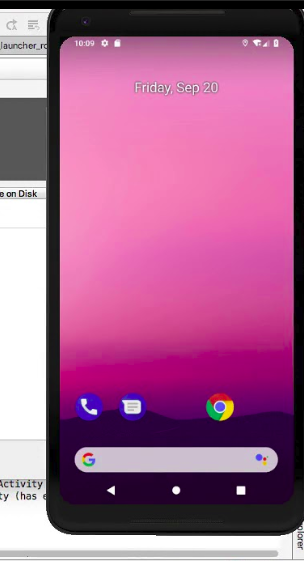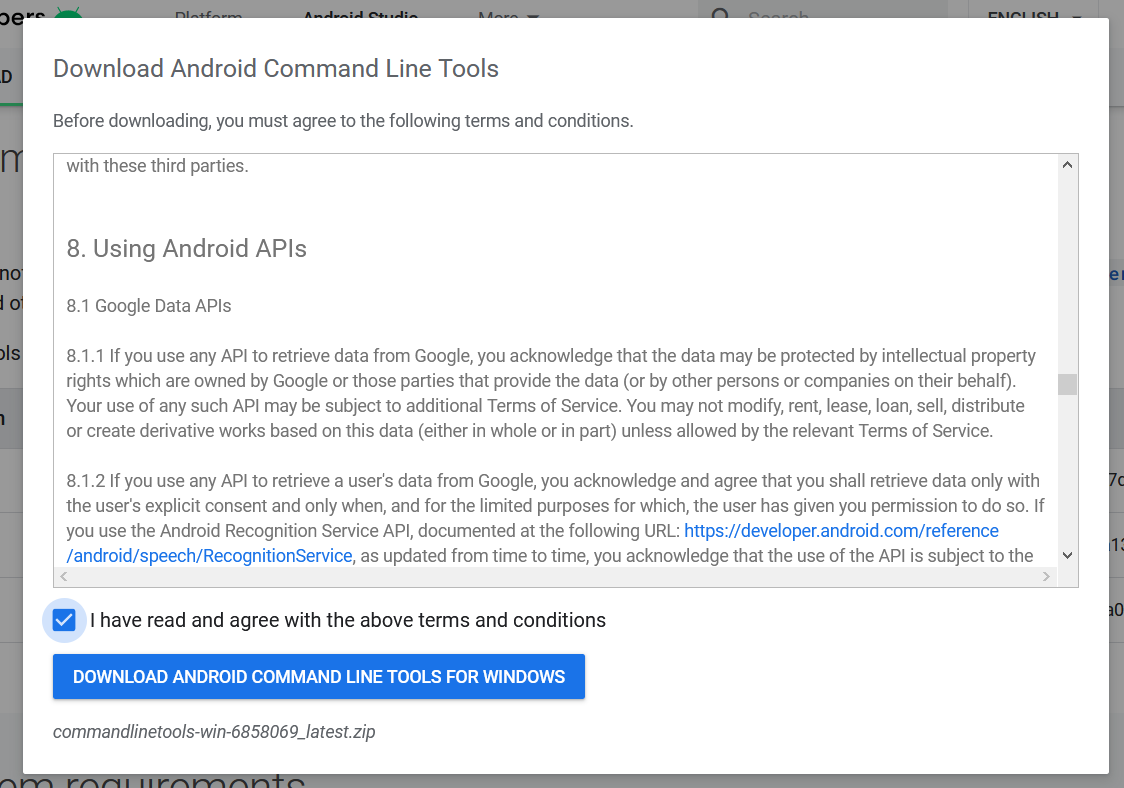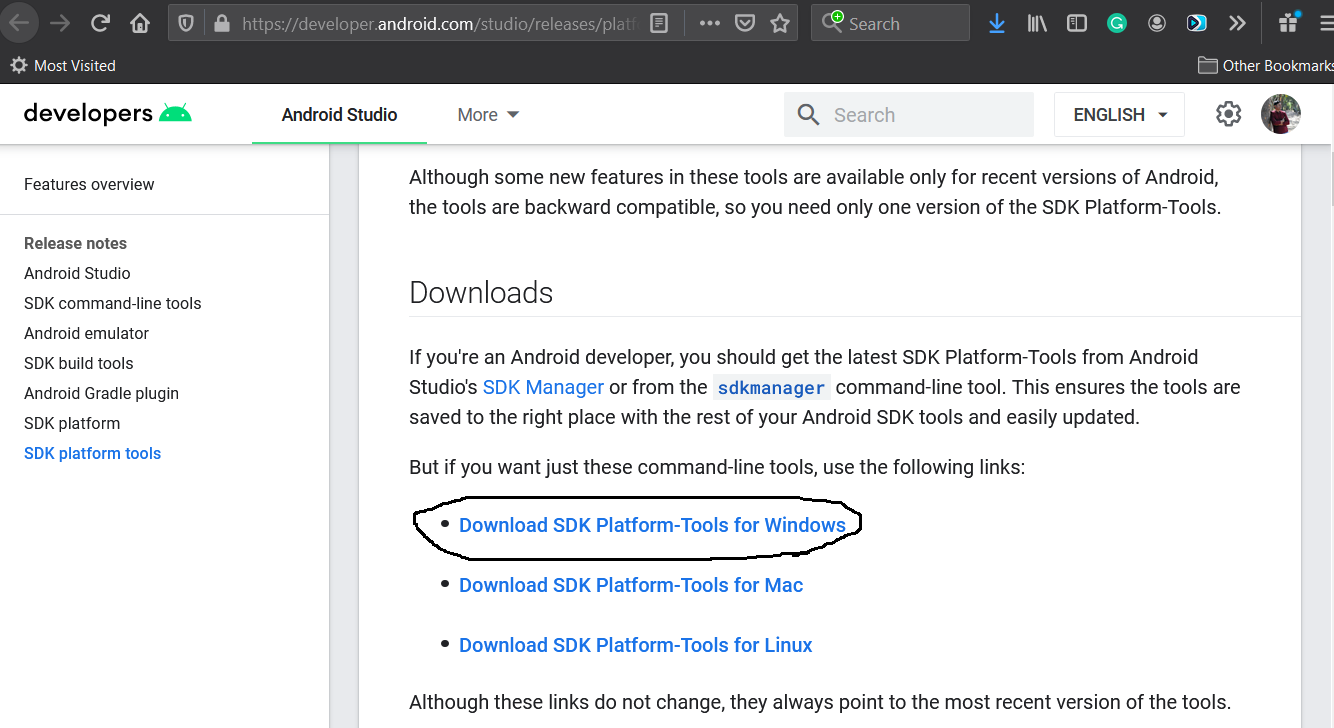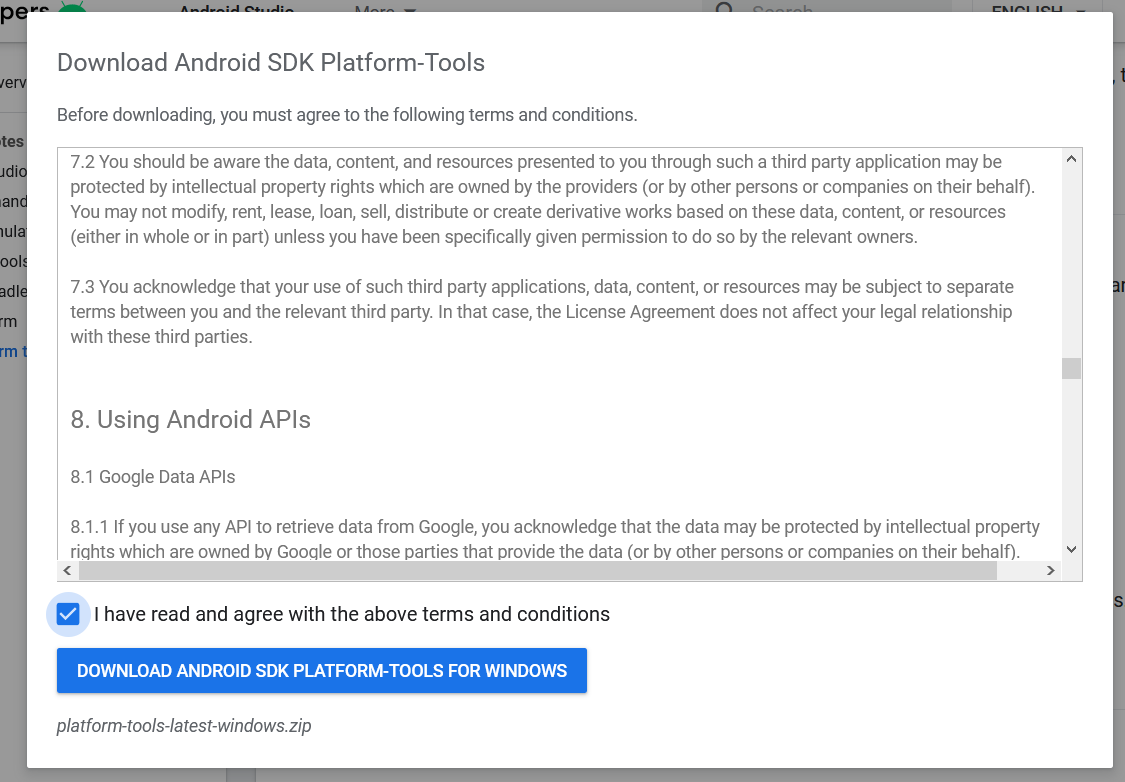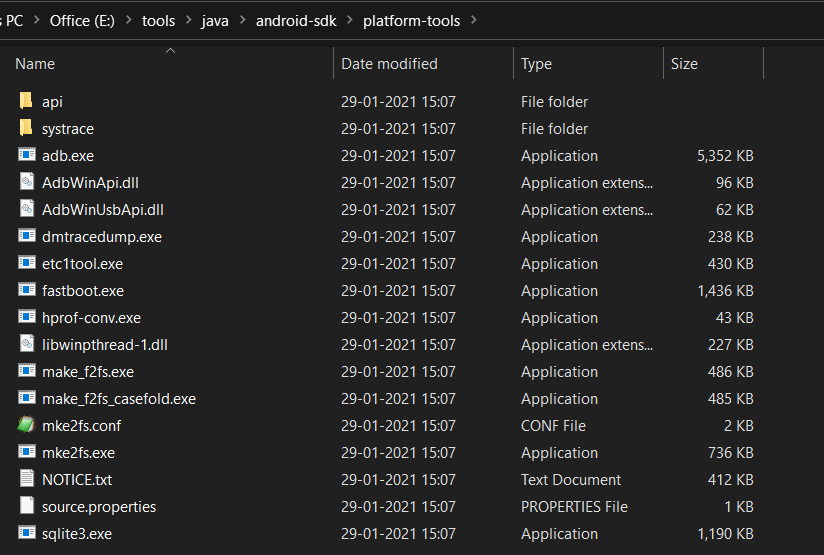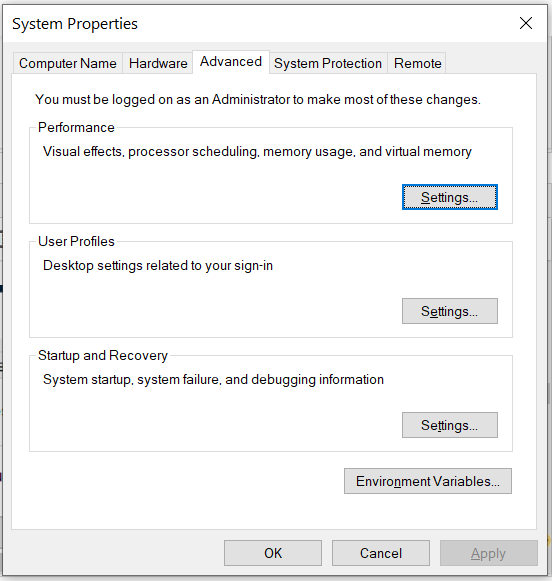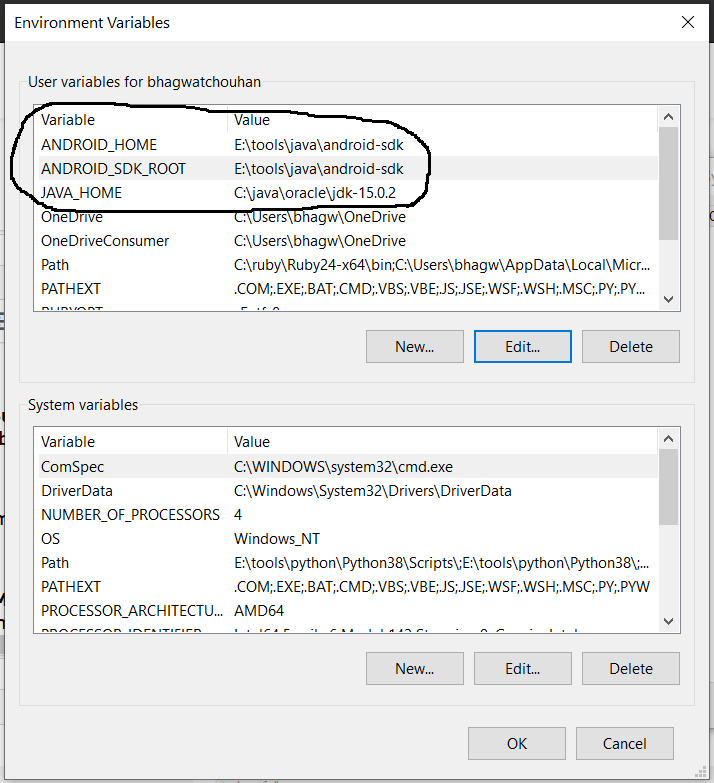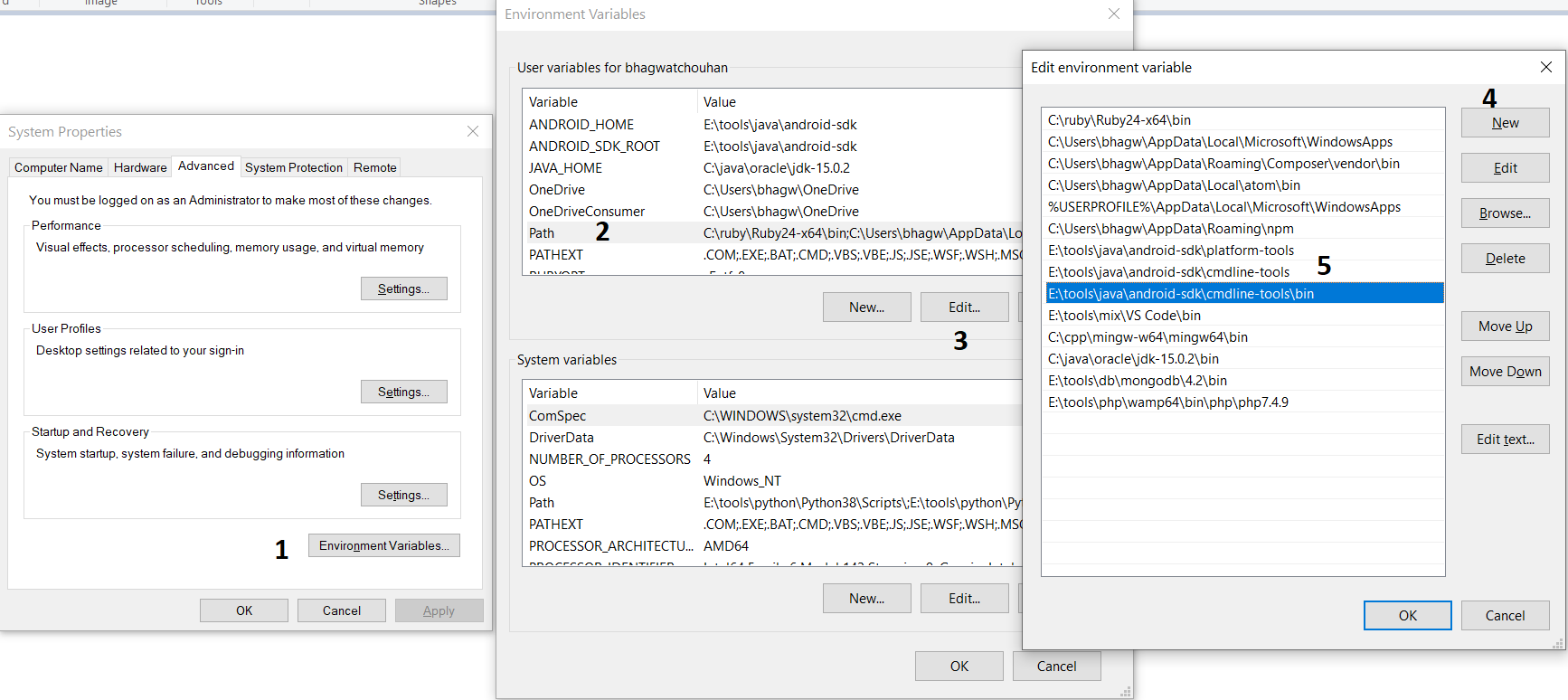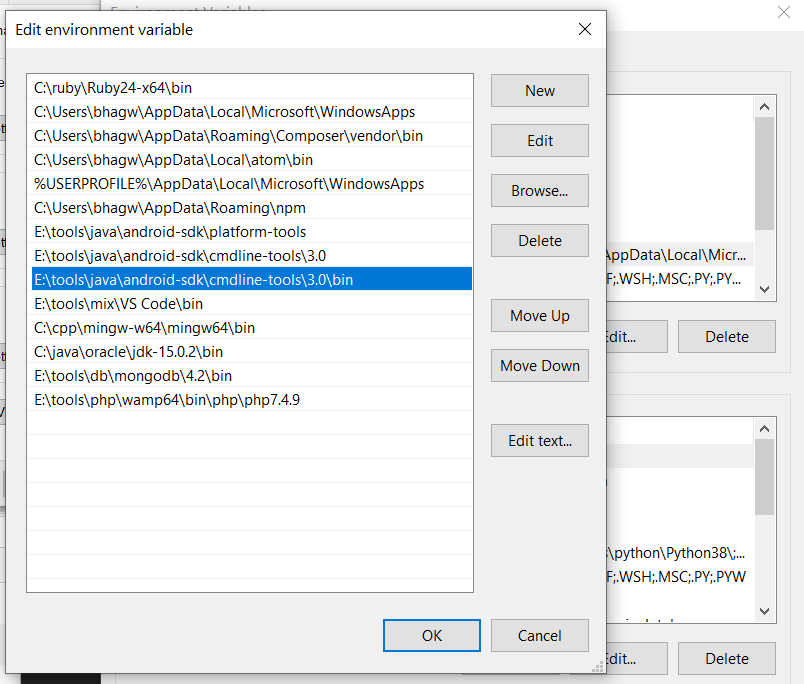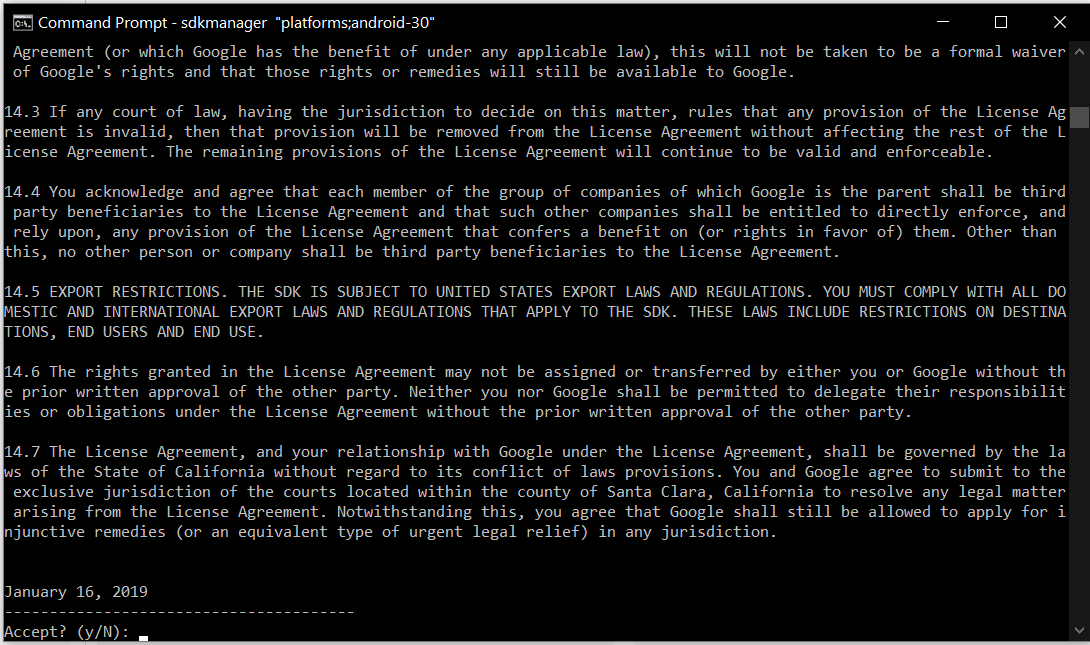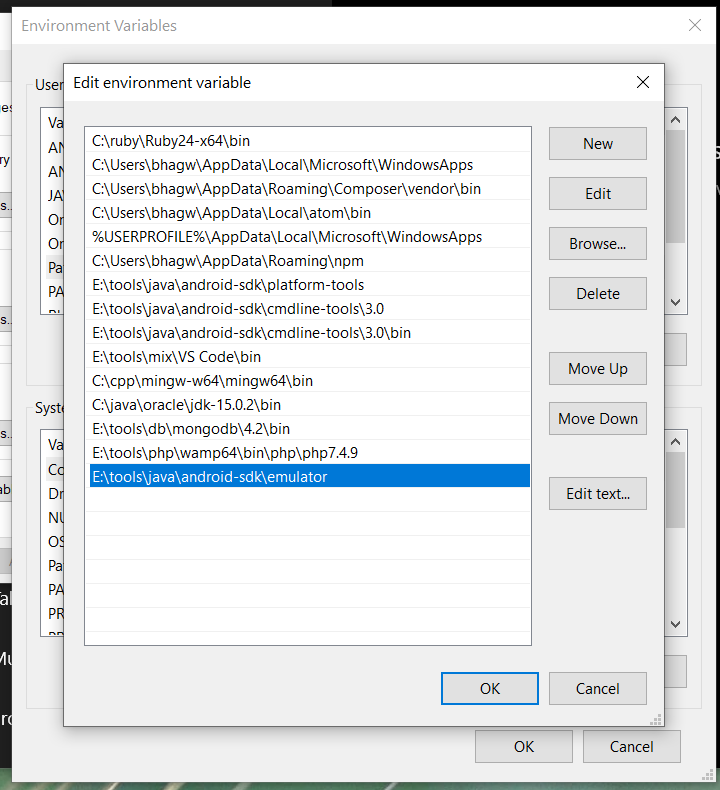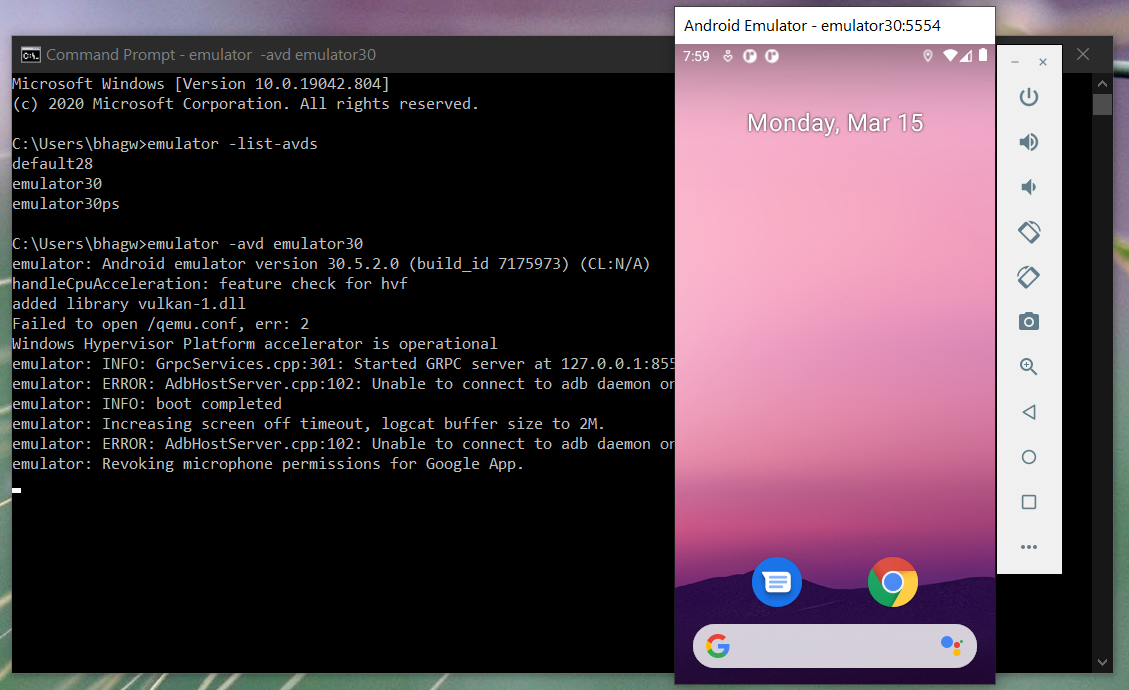- Android SDK and it’s Components
- About Android SDK
- Components of Android SDK
- 1. Android SDK Tools
- 2. Android SDK Build-Tools
- 3. Android Emulator
- 4. Android SDK Platform-tools
- 5. Android SDK Tools
- 6. SDK Platforms
- 7. SDK Update Sites
- Download Android SDK Platform Tools (all versions)
- Download Platform Tools
- How To Install Android SDK Tools On Windows
- Step 1 — Download SDK Tools
- Step 2 — Install Command Line Tools
- Step 3 — Install Platform Tools
- Step 4 — Configure Environment Variable
- Step 5 — Configure Commands
- Step 6 — Using the SDK Manager
- Step 7 — Using the Emulator and AVD Manager
- Summary
Android SDK and it’s Components
Android SDK stands for Android Software Development Kit which is developed by Google for Android Platform. With the help of Android SDK, we can create android Apps easily.
About Android SDK
Android SDK is a collection of libraries and Software Development tools that are essential for Developing Android Applications. Whenever Google releases a new version or update of Android Software, a corresponding SDK also releases with it. In the updated or new version of SDK, some more features are included which are not present in the previous version. Android SDK consists of some tools which are very essential for the development of Android Application. These tools provide a smooth flow of the development process from developing and debugging. Android SDK is compatible with all operating systems such as Windows, Linux, macOS, etc.
Components of Android SDK
Android SDK Components play a major role in the Development of Android applications. Below are the important components:
1. Android SDK Tools
Android SDK tool is an important component of Android SDK. It consists of a complete set of development and debugging tools. Below are the SDK developer tools:
- Android SDK Build tool.
- Android Emulator.
- Android SDK Platform-tools.
- Android SDK Tools.
These are shown below :
2. Android SDK Build-Tools
Android SDK build tools are used for building actual binaries of Android App. The main functions of Android SDK Build tools are built, debug, run and test Android applications. The latest version of the Android SDK Build tool is 30.0.3. While downloading or updating Android in our System, one must ensure that its latest version is download in SDK Components.
3. Android Emulator
An Android Emulator is a device that simulates an Android device on your system. Suppose we want to run our android application that we code. One option is that we will run this on our Android Mobile by Enabling USB Debugging on our mobile. Another option is using Android Emulator. In Android Emulator the virtual android device is shown on our system on which we run the Android application that we code.
Thus, it simply means that without needing any physical device Android SDK component “Android Emulator” provides a virtual device on the System where we run our Application. The emulator’s come with the configuration for Various android phones, tablets, Wear OS, and Android TV devices.
In Android Virtual Emulator all functions that are feasible on real Android mobile is works on virtual Device like:
But there is one disadvantage of this emulator is that. It is very slow when System’s PC has less RAM. It works fine when a maximum GB of RAM is present on our device.
4. Android SDK Platform-tools
Android SDK Platform-tools is helpful when we are working on Project and they will show the error messages at the same time. It is specifically used for testing. It includes:
- Android Debug Bridge (ADB), is a command-line tool that helps to communicate with the device. It allows us to perform an action such as Installing App and Debugging App etc.
- Fastboot allows you to flash a device with a new system image.
- Systrace tools help to collect and inspect timing information. It is very crucial for App Debugging.
5. Android SDK Tools
Android SDK tool is a component of SDK tool. It consists of a set of tools which and other Utilities which are crucial for the development of Android Application. It contains the complete set of Debugging and Development tools for android.
6. SDK Platforms
For Each Android Software, one SDK platform is available as shown below:
Like in this Android 11.0(R) is installed.
These are numbered according to the android version. The new version of the SDK platform has more features and more compatible but the old version is less compatible with fewer features. Like in Android 11.0(R) have more compatible and have more feature but the below versions like Android 10.0(Q), Android4.4(KitKat) have less feature and is less compatible.
7. SDK Update Sites
In SDK Update Sites, some sites are embedded in it which will check for Android SDK Updates Tools. In this, one must ensure we don’t unclick the button below because these are checked by default which will check for updates if we will unclick it then it doesn’t check updates for those.
Источник
Download Android SDK Platform Tools (all versions)
Android SDK Platform Tools are the elements of the Android SDK. It contains tools that alliance with the Android platform, such as ADB, fastboot, and systrace.
Here on this page, we have shared the latest version of the Android SDK Platform Tools and the previous versions.
Download Platform Tools
| Version | Windows | Linux | Mac |
|---|---|---|---|
| R03 | Link | Link | – |
| R04 | Link | Link | – |
| R05 | Link | Link | – |
| R06 | Link | Link | – |
| R07 | Link | Link | – |
| R08 | Link | Link | – |
| R09 | Link | Link | – |
| R10 | Link | Link | – |
| R11 | Link | Link | – |
| R12 | Link | Link | – |
| R13 | Link | Link | – |
| R14 | Link | Link | – |
| R16 | Link | Link | – |
| R16.0.1 | Link | Link | – |
| R16.0.2 | Link | Link | – |
| R17 | Link | Link | – |
| R18 | Link | Link | – |
| R18.0.1 | Link | Link | – |
| R19 | Link | Link | – |
| R19.0.1 | Link | Link | – |
| R19.0.2 | Link | Link | – |
| R20 | Link | Link | – |
| R21 | Link | Link | – |
| R22 | Link | Link | – |
| R23 | Link | Link | – |
| R23.0.1 | Link | Link | – |
| R23.1.0 | Link | Link | – |
| R24 | Link | Link | – |
| R24.0.2 | Link | Link | – |
| R24.0.3 | Link | Link | – |
| R24.0.4 | Link | Link | – |
| R25 | Link | Link | – |
| R25.0.1 | Link | Link | – |
| R25.0.2 | Link | Link | – |
| R25.0.3 | Link | Link | Link |
| R25.0.4 | Link | Link | Link |
| R25.0.5 | Link | Link | Link |
| R25.0.6 | Link | Link | Link |
| R26.0.0 | Link | Link | Link |
| R26.0.1 | Link | Link | Link |
| R26.0.2 | Link | Link | Link |
| R27.0.0 | Link | Link | Link |
| R27.0.1 | Link | Link | Link |
| R28.0.0 | Link | Link | Link |
| R28.0.1 | Link | Link | Link |
| R28.0.2 | Link | Link | Link |
| R28.0.3 | Link | Link | Link |
| R29.0.0 | Link | Link | Link |
| R29.0.1 | Link | Link | Link |
| R29.0.2 | Link | Link | Link |
| R29.0.3 | Link | Link | Link |
| R29.0.4 | Link | Link | Link |
| R29.0.5 | Link | Link | Link |
| R29.0.6 | Link | Link | Link |
| R30.0.0 | Link | Link | Link |
| R30.0.1 | Link | Link | Link |
| R30.0.2 | Link | Link | Link |
| R30.0.3 | Link | Link | Link |
| R30.0.4 | Link | Link | Link |
| R30.0.5 | Link | Link | Link |
| R31.0.0 | Link | Link | Link |
| R31.0.1 | Link | Link | Link |
| R31.0.2 | Link | Link | Link |
| R31.0.3 | Link | Link | Link |
[*] Usage: Platform Tools can be used to unlock the Android Device’s bootloader, flashing new system images on the device, managing the device through ADB commands and during the development of an Android App.
[*] Setup ADB and Fastboot using Android SDK: If you want to learn to set up the ADB and fastboot files using the Android SDK package, then head over to How to setup ADB and Fastboot Drivers page.
[*] ADB Driver Installer: If you want to install the Google ADB Driver on the Windows Computer, then head over to Download 15 Seconds ADB installer page.
[*] Credits: Platform Tools are the part of the Android SDK package and are officially provided by Google, LLC. So, full credit goes to them for sharing the Platform Tools for free.
Источник
How To Install Android SDK Tools On Windows
It provides all the steps required to install Android Platform Tools and SDK Manager on Windows 10 without using Android Studio.
In this tutorial, we will discuss all the steps required to install Android Platform Tools and SDK Manager on Windows 10. This tutorial provides the steps for Windows 10, though the steps should be the same on other versions of Windows.
This post is useful for the developers using Android Platform Tools and SDK manager without installing Android Studio for the use cases including hybrid app development using Ionic. It also assumes that a valid JAVA_HOME environment variable exists pointing to the installation directory of Java.
You can follow How To Install Java 8 On Windows 10, How To Install Java 11 On Windows, How To Install Java 15 On Windows, or How To Install OpenJDK 15 On Windows to install Java on Windows. In case you are interested in developing Android applications using Android Studio, you can also follow How To Install Android Studio On Windows.
Step 1 — Download SDK Tools
Open the download tab of Android Studio and scroll down to the Command line tools only section. This section shows various options to download the SDK tools as shown in Fig 1.
Click the first link having the download option for Windows as highlighted in Fig 1. It will ask to accept to terms and conditions as shown in Fig 2.
Go through the details, agree on the terms and conditions and click the Download Button to start the download.
Step 2 — Install Command Line Tools
In this step, we will install the Android Command Line Tools on Windows 10. Create the directory android-sdk at your preferred location and extract the content of the downloaded SDK Tools zip to this directory. Make sure that the extracted content is available within the android-sdk directory created by us as shown in Fig 3.
Step 3 — Install Platform Tools
In this step, we will install the Android Platform Tools on Windows 10. Follow the same steps similar to Android SDK Tools to install Android Platform Tools using the download link as shown in Fig 4, Fig 5, and Fig 6.
Step 4 — Configure Environment Variable
Right-click the My Computer or This PC on the desktop and click the Properties Option. Now click the Advanced system settings. It will show the System Properties dialog having Advanced Tab options as shown in Fig 7.
Click the Environment Variables Button and click the New Button in the first section. Set the Variable Name field to ANDROID_HOME and Variable Value to the android-sdk directory created by us in the previous step.
Similarly, also configure the environment variable ANDROID_SDK_ROOT to the android-sdk directory.
Also , make sure that the JAVA_HOME environment variable is set to the JDK installation directory. It must not end with the bin as we do with the system path variable.
Step 5 — Configure Commands
In previous steps, we have downloaded and extracted the Command Line Tools and Platform Tools to the android-sdk directory. Both the tools provide several command-line utilities which we need to run by going to the appropriate directory having the executable files.
We can make these commands available at the system level without going to these directories by adding the path to tools, tools\bin, and platform-tools to the system path as shown in Fig 9. Make sure that these executables do not break other commands having the same name before adding these paths to the PATH environment variable.
Now open the Command Prompt and check the ADB and SDK Manager versions as shown in Fig 10. You might be required to restart the system to apply the environment variables set by us.
We can see that the ADB command works well and shows the version details, but the sdkmanager shows an error — «error: could not determine sdk root. error: either specify it explicitly with —sdk_root= or move this package into its expected location: \cmdline-tools\latest\» since it expects the Command Line Tools in a version-specific directory. Now open the source.properties file from the cmdline-tools directory to check the version. It will show the version details as shown below.
Now move all the files to the directory cmdline-tools/3.0 as shown in Fig 10.
Also, update the system path as shown in Fig 11.
Now close and open the Command Prompt. Also, check the ADB and SDK Manager versions as shown in Fig 12.
Step 6 — Using the SDK Manager
List — We can list the installed and available packages and images using the list command as shown below.
Install Platform — Use the below-mentioned command to install the Android 10 (API level 30) using the SDK manager.
It will ask to accept the terms and conditions as shown in Fig 13. Enter y and hit Enter Key to accept the terms and conditions. This command creates the directory platforms within android-sdk and installs the package android-30 having all the required files to run the emulator for Android 10.
If we again check the installed packages, the list command shows the installed options as shown below.
Update SDK Manager — Update the SDK manager using the below-mentioned command.
Add System Image — We can add system images from available images shown by the list command using the SDK manager as shown below. We are adding the most recent default 64-bit system image.
Accept the License Agreement to complete the download.
There are several projects which need Google Play Services. We need system images specific to Google Play Services as shown below.
Accept the License Agreement to complete the download.
Install Emulator — We need to install the emulator before creating the AVD using SDK Manager.
Accept the License Agreement to complete the download.
Install Build Tools — Install the most recent build tool listed by the list command.
Step 7 — Using the Emulator and AVD Manager
Create Android Emulator — Create the emulator using the system image downloaded in the previous step as shown below. Replace with the actual name preferred by you.
The above commands ask a bunch of questions to configure the AVD if we choose the custom hardware profile option. We have excluded the details of these options from this tutorial since these configuration details depend on the actual needs. After completing all the configurations, it creates the AVD using the name provided by us while configuring it.
Similarly, we can also install the AVD of older versions as shown below.
List Android Emulators — Now go to the tools directory on the command line and check the installed platform as shown below.
Notes: Add Emulator to the system path as shown in Fig 14.
Close and re-open the Command Prompt to check the AVDs created by us in the previous steps.
It will list all the AVDs installed by us.
Run Emulator — We can run the emulator created by us as shown below.
The emulator will take some time to completely launch the AVD. The final results should look similar to Fig 15.
Delete Emulator — We can also delete an existing emulator as shown below.
Summary
This tutorial provided all the steps required to install Android Platform Tools and Android SDK Manager on Windows 10. It also provided the steps required to create and launch the AVDs using the Emulator.
Источник
